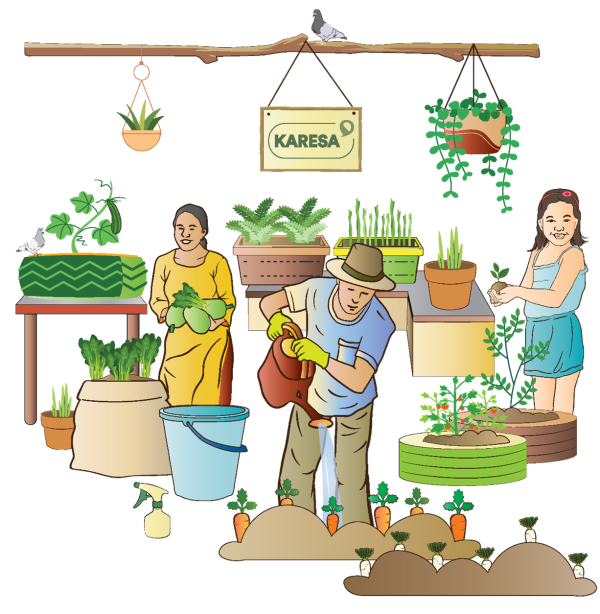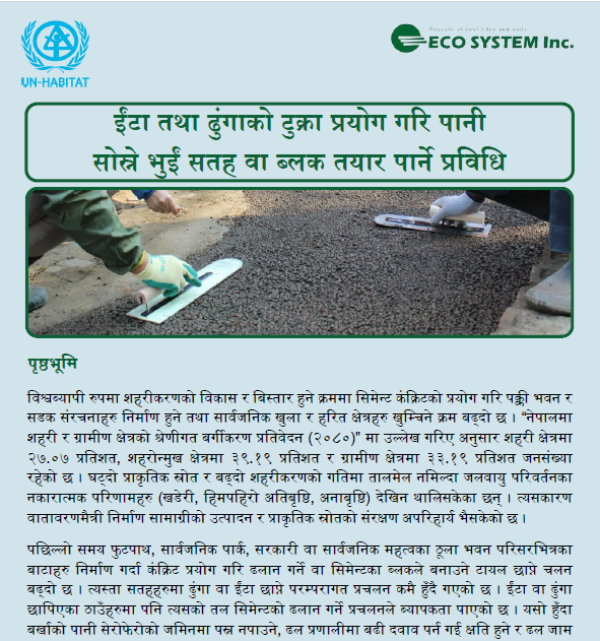Rebuilding Nepal

THE BUSINESS OF SUSTAINABLE, ECO-FRIENDLY, DISASTER-PROOF CONSTRUCTION September 6 2015, Nivida Lamichhane | All would agree that the twin quakes were a wakeup call for Nepal. On many fronts we were caught unprepared. The industry that was the most shaken up however, I can safely say, is the construction sector. Staying in a house that is a load-bearing structure, and having spent many sleepless nights along with my family whenever aftershocks struck, I understand how critical construction material and technology has become now. At the recently concluded exhibition on sustainable housing at Institute of Engineering, Pulchowk, I was witness to a growing interest among visitors that were intent on new construction and modifying built structures with technology that is sustainable, ecologically friendly, and most importantly safe in the event of a natural disaster. This is in sharp contrast to the cost-cutting that consumers and construction professionals resorted to. Also, people have become much more conscious regarding building codes and quality of construction material, two areas that were blatantly ignored and compromised upon previously. Having volunteered time at ABARI, a company specialising in construction using earth and bamboo, I am aware how locally available material can be used to build structures that are ecofriendly, economical in the long run, and sustainable – three parameters that is guiding mantra for construction professionals worldwide. To have an insider’s insight into the issue of reconstruction and rebuilding I met Dr Santosh Shrestha, Sustainable Housing Expert with UN Habitat, who is also one of the chief implementers of the Green Homes project in Nepal According to him, there is a renewed sense of urgency among policy makers to ensure that building codes are updated and implemented effectively. This, Shrestha says, is also a great opportunity to implement safer and sustainable housing considering local climate conditions and multi-hazard safety measures. He also feels that there is genuine interest among the general public to understand safer technologies that are geared toward building sustainable residential or commercial properties. He stresses that the rebuilding effort should be economical, eco-friendly and sustainable and that modern technological innovations should take advantage of local building material and expertise. On the issue of prefabricated building material Shrestha has mixed opinion — there are pros and cons, he says. Although fast and easy to build and most likely to cause less damage to residents of a building during a quake because of lightweight construction, the technology may not be socially acceptable in far-flung, remote areas of the country which have the most rebuilding to do. Also, economically prefab construction does not benefit the country’s economy because most of money spent is ploughed back to pay the country from where the technology/material have been imported. International agencies that are funding rebuilding efforts encourage the use of local resources, technology, and manpower in reconstruction and rebuilding efforts. Shrestha believes that the construction industry is on the verge of a huge shakeup that is going to benefit the consumers, give rise to a greener and safer society, as well as inject economic prosperity overall by encouraging entrepreneurship in this field. Hemendra Bohara of ‘matoghar’ fame opines that interest in sustainable houses is definitely on the increase as a viable alternative to concrete ones. Matoghar incidentally is the first house in Budanilkantha that was built with rammed earth technology, It is beautiful, modern and Bohara claims is earthquake-resistant. He feels that more such examples need to be built to make people believe in the technology. Already, he shares, a hospital is being built in Accham and Kopila Valley School in Surkhet. An ideal case in sustainability, rammed earth buildings use earth from the local site. Use of cement still is minimal and no burnt bricks are used. With no additional finishing required on the walls and the thick earth walls keeping the interiors cool during summer and warm during winter, incorporating passive solar design, energy costs are simply struck off. If clients want to take a further jump onto the sustainability bandwagon, Bohara recommends that waste water treatment, rainwater harvesting, passive solar design, and solar power as a means of electricity generation, be incorporated to be truly green. Both believe that it is time to raise voice for safe, sustainable and eco-friendly construction which has the power to propel Nepal into the global conservation and sustainability map. The author is a Project Leader at WriteWeavers, a specialised content planning and development company. She can be reached at lamichhane.nivida@gmail.com Source: The Himalayan times





